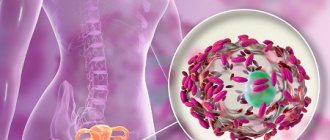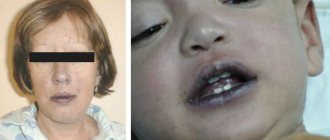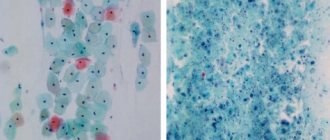Anticonvulsants appeared only 100 years ago. Over the past decades, scientists and manufacturers have been discovering new compounds and bringing new drugs to the market. How to make the right choice?
Cramps are involuntary muscle contractions. They can also occur in healthy people after overloading certain muscles, for example, in athletes, violinists, or during hypothermia in water. When falling asleep and during sleep, convulsive involuntary twitching is common. But various types of seizures can also be symptoms of epilepsy.
Epilepsy
Epileptic seizures that occur without any apparent reason two or more times can be considered epilepsy. An epileptic seizure is an abnormal or excessive discharge of neurons in the brain with visible manifestations. Visible manifestations are not always convulsions and loss of consciousness, they can be:
- only changes in consciousness;
- mental manifestations;
- motor changes;
- vegetative manifestations.
For a particular person, these symptoms can be in the form of ringing in the ears, flashes of light or flame, redness of the face, short-term disturbances in speech, memory and many others. It depends on where the nerve impulse went out of control and activated a particular area of the brain. Moreover, these changes may be first noticed by another person, and not by the patient himself. This can happen, for example, with episodes of freezing for a few seconds. If these symptoms have a clear cause, such as a head injury or a brain tumor, it is not epilepsy.
There are many forms of epilepsy depending on the type of epileptic seizures, types of epilepsy and status epilepticus (an epileptic seizure lasting more than 30 minutes at once or a series of seizures without full recovery of consciousness).
If the symptoms have a clear cause, then it is not epilepsy.
Classification of antiepileptic drugs
There are several classifications of antiepileptic drugs: according to the characteristics of use in different forms of epilepsy - types of paroxysms, according to the mechanism of action, as well as the chemical structure of the drugs.
According to the mechanism of action, the following groups of antiepileptic drugs are distinguished:
Sodium channel blockers
- Hydantoin derivatives (phenytoin)
- Carboxamide derivatives (carbamazepine, oxcarbazepine, eslicarbazepine acetate)
- Others (lamotrigine, lacosamide)
Calcium channel blockers
- Succinimide derivatives (ethosuximide)
- Others (pregabalin)
Agents that enhance the inhibitory effects of GABA
- Barbiturates (phenobarbital, benzobarbital)
- Benzodiazepines (diazepam, clonazepam, lorazepam)
- Others (vigabatrin, gabapentin, tiagabine)
Agents that inhibit the action of excitatory amino acids
- Felbamate
Combination agents
- Fatty acid derivatives (valproic acid and its salts - valproates)
- Others (topiramate)
According to the characteristics of their use in different forms of epilepsy, antiepileptic drugs are divided into:
- Drugs used for partial seizures: valproate, carbamazepine, lamotrigine, vigabatrin, gabapentin, phenobarbital, clonazepam, phenytoin.
- Drugs used for generalized seizures:
- for grand mal seizures - valproate, carbamazepine, phenobarbital, phenytoin, lamotrigine;
- for small convulsive seizures (absences) - ethosuximide, valproate.
In addition to the drugs listed in the classification, seizures can be eliminated or prevented by magnesium preparations (magnesium sulfate) when administered intravenously, anesthetics (sodium hydroxybutyrate, sodium thiopental).
Convulsions
You might think that seizures occur only with epilepsy. Therefore, when they appear, anticonvulsants are definitely needed. In addition to epilepsy, there may be many other conditions that have nothing to do with it, but which may be accompanied by seizures:
- Cerebrovascular disease, age over 75 years, and hemorrhagic strokes often cause the onset of acute symptomatic seizures.
- Traumatic brain injuries.
- Infectious diseases of the central nervous system (meningitis, encephalitis, HIV infection).
- Oxygen starvation of the brain.
- Intoxication of the body.
- Taking medications.
- Acute metabolic disorders, for example, hypoglycemia in the treatment of diabetes mellitus, electrolyte imbalance.
- Withdrawal syndrome when stopping alcohol consumption.
- Taking large doses of alcohol.
- Taking psychotropic drugs (psychotropic stimulants - cocaine, crack, ecstasy).
- Temperatures above 38.5°C in children under 7 years of age can cause febrile seizures.
- Liver failure.
- Parkinson's disease.
Therefore, self-administration of anticonvulsants without a doctor’s prescription is prohibited. First you need to establish the cause of the problem and only then treat it.
Indications for use
All antiepileptic drugs are used to treat epilepsy, as well as symptomatic seizures in other diseases of the nervous system.
Certain drugs (carbamazepine, gabapentin, pregabalin) are also used to treat neuralgia and neurogenic pain (associated with nerve damage).
Lamotrigine, carbamazepine, oxcarbazepine, and valproic acid are additionally used to normalize mood in patients with bipolar affective disorder, which is characterized by alternating periods of manic agitation and depression.
Approaches to taking anticonvulsants
If previously the main goal of treating epilepsy and taking anticonvulsants was to prevent new seizures, today an integrated approach takes first place, taking into account the patient’s quality of life and maintaining his ability to work during treatment
Finding effective therapy can be difficult. This is influenced by factors such as compliance with medication regimen and side effects. Changing drugs by trade name, but with the same active ingredient, can also lead to worsening problems.
Typically, one drug is used at the beginning of treatment for epilepsy, but the dosage and medication may vary. If the desired result is not achieved, only then connect a second remedy and use various combinations.
Finding effective therapy can sometimes be difficult.
Anticonvulsants
There are 3 main mechanisms used to treat epilepsy:
- Stabilization of the membrane potential of nerve cells due to the influence on ion channels. Due to this, K+ ions remain in the cell, and Na+ ions outside. The effect can also be exerted through Ca2+ channels. This maintains “rest” on the membrane of nerve cells.
- Suppression of processes involved in excitation.
- Strengthening braking mechanisms.
Many drugs act on several mechanisms at once and it will not be possible to divide them into groups on this basis.
Medicines:
Depakine Chronosphere , Convulex , Encorat chrono . Valproic acid preparations. They have a muscle relaxant effect and enhance inhibitory processes in the brain. Absorption of the drug may slow down when taken with food. Side effects include : weight gain, hair loss, gastrointestinal problems, tremors.
Finlepsin retard , Tegretol CR , Carbatol. They belong to carbamazepine drugs and are used for grand mal seizures and mixed forms of epilepsy. Contraindications: absence and myoclonic seizures. Side effects: dizziness, drowsiness, headache, but stopping treatment often causes a skin rash.
Phenobarbital , Benzonal , Maysolin . They belong to the group of barbiturates. Can be used for any type of epilepsy attack. Often used in infants. There is a marked slowdown in mental processes. Children have the opposite reaction and develop hyperreactivity. They reduce motor activity and can cause drowsiness. The anticonvulsant effect is realized by preventing the occurrence and propagation of an impulse from the source of activity. The absence form of idiopathic epilepsy will be a contraindication for use.
Frisium , Relanium , Merlit. They belong to the group of benzodiazepines. They are especially often used for progressive myoclonic epilepsy. But over time, the effect may decrease and addiction may develop .
Lamictal , Pamolen. The active ingredient is lamotrigine. It is effective for all types of seizures, but it is recommended to avoid it for myoclonus. The main side effect is a rash, the severity of which increases sharply when combined with valproate and carbamazepine.
Topamax (topiramate). Acts on different mechanisms in preventing attacks, effective in adults and children. Start taking with minimal doses and increase slowly. Use with caution in children with speech disorders, as well as sleep problems. One of the side effects is weight loss, so it should not be used in “thin” patients.
Keppra , Levetinol . The active ingredient is levetiracetam. Optimal action for epileptic myoclonus, does not interact with other drugs. Should not be used in patients prone to agitation and sleep disturbances.
Suxilep. Previously it was the drug of choice for the treatment of absence seizures, but has now given way to valproic acid. Contraindicated for mental problems. Side effects: headache, drowsiness, gastrointestinal symptoms.
Tebantin , Neurontin , Gabapentin . Structurally similar to GABA, they are not transformed in the liver, so they can be used with many other drugs and for liver diseases. Side effects: weakness, dizziness, weight gain.
Since the treatment of epilepsy in many cases involves lifelong use of drugs, the balance between their effectiveness and toxicity is important. Drug metabolism pathways (in the liver) and interactions with other drugs in concomitant diseases also play a role. The selection of anticonvulsant drug therapy is a joint effort between the doctor and the patient.
Pharmacological treatment of epilepsy
MMA im. THEM. Sechenov
Epilepsy is the most common serious disorder of brain activity and one of the most common seizure disorders.
Unfortunately, due to ignorance of the basics of modern antiepileptic therapy, its effectiveness even in developed countries is in many cases insufficient. The main reasons for treatment failure are
:
1) incorrect diagnosis of epilepsy (non-epileptic seizures are often mistaken for epilepsy and vice versa);
2) wrong choice of drug;
3) incorrect dosage (only about 10% of patients treated for “intractable” seizures receive doses corresponding to the therapeutic concentration);
4) irrational polytherapy;
5) violation of the regularity of treatment [1].
The following article outlines the basic principles of drug treatment of epilepsy in accordance with the recommendations of experts from the International League Against Epilepsy (IAL).
The goal of pharmacotherapy for epilepsy
is the complete cessation of seizures without neuropsychic and somatic side effects and ensuring the pedagogical, professional and social adaptation of the patient.
This is possible in half of all patients with epilepsy. In 30% of patients, complete cessation of seizures can be achieved at dosages that cause certain side effects. If acceptable doses without side effects make it possible to reduce the frequency and (or) severity of attacks to a tolerable level, one has to be satisfied with this result. Finally, in 10–20%, treatment has no significant effect on seizure frequency. In these cases, one has to limit oneself to minimal drug antiepileptic therapy
, which allows reducing the number and severity of grand mal seizures or avoiding status epilepticus, as well as looking for surgical treatment options.
Making decisions about drug treatment
All antiepileptic drugs are potentially toxic, and treatment in almost all cases must be prolonged and intensive, so treatment decisions are made after weighing the expected benefits against the side effects that may follow. For symptomatic epilepsy due to current brain disease (tumors, encephalitis, vascular disorders) and correctable metabolic disorders, metabolic-genetic diseases, for situationally caused seizures (alcohol, hypocalcemia, hypoglycemia, febrile convulsions, etc.), treatment or correction of the underlying condition is carried out and Symptomatic anticonvulsant therapy, the need, duration and intensity of which depends on the response to treatment of the underlying seizure disorder.
Specific long-term drug antiepileptic treatment
begin with a confident diagnosis of epilepsy and conviction of the need for drug treatment in this patient. Cases when you can refrain from drug antiepileptic treatment are as follows:
a) first isolated epileptic seizure. The most common practice is to begin treatment after the second seizure;
b) rare or mild epileptic seizures in relatively benign forms of epilepsy: short (up to several seconds) typical absence seizures without deep loss of consciousness, short and limited myoclonus, short focal or widespread myoclonic seizures during sleep, which do not significantly disrupt lifestyle. These forms relate almost exclusively to idiopathic epilepsy of childhood and adolescence with absence seizures or to benign epilepsy of childhood with centrotemporal spikes. You can refrain from antiepileptic therapy for rare (single) mild seizures in the form of short partial or partial complex seizures with automatisms, sensory or mental symptoms in “benign psychomotor epilepsy of childhood” and idiopathic epilepsy of childhood with occipital paroxysms in the presence of a somatic disease that creates a risk the use of anticonvulsant therapy, primarily hepato- and hematopathies;
c) you can refrain from starting or resuming treatment if you previously had rare (1-2 per year) seizures, more than 6 months have passed since the last of which and the end of taking anticonvulsants, and if the EEG does not reveal epileptiform and focal pathological activity.
Before starting treatment, the patient should undergo a complete general clinical examination (including determining body weight and measuring blood pressure), with special attention to possible disorders that may be the result of side effects of drugs or cause incurability.
The most common drugs and contraindications to their use are as follows:
Valproates – familial hepatopathy, blood clotting disorders; age less than 2 years.
Benzodiazepines – angle glaucoma, myasthenia gravis, hepatic porphyria.
Carbamazepine – atrioventricular block, increased sensitivity to tricyclic antidepressants.
Phenytoin – atrioventricular and sinoatrial block, hepatic porphyria.
Phenobarbital, primidone, carbamazepine, clonazepam - hepatic porphyria.
Laboratory tests should include:
• general blood test with platelet level determination;
• general urine analysis;
• liver tests, including bilirubin, transaminases, alkaline phosphatase;
• total plasma protein with electrophoresis;
• calcium and potassium (before prescribing carbamazepine, oxcarbazepine), sodium (before acetazolamide);
• fasting blood sugar (before phenytoin);
• triglycerides, cholesterol.
Beginning and process of treatment
The patient and his relatives should be informed that the treatment will last at least 2–5 years and it is unacceptable to change the treatment without permission.
. The essence of the disorder should be explained, paying attention to the possibility of leading a fairly full lifestyle with epilepsy, which will help the patient better understand and accept the need for close cooperation with the doctor and a number of additional life aspects related to treatment. Treatment begins with correction of the patient's regimen and social activity and includes family therapy and the provision of social guarantees. Adequate sleep is recommended; premature awakenings, especially by an alarm clock, are contraindicated. Mental stress and negative emotions provoke epileptic seizures and worsen the course of the disease. Overprotection and increased attention to the patient in specific connection with a seizure through the mechanism of conditioned learning lead to an increase in seizures due to the unconscious (or conscious) desire of the patient to reproduce situations of increased sympathetic attention. The patient's life should be active and interesting [2].
Factors that lower the epileptic threshold should also be avoided
such as hyperinsolation and hyperthermia, excessive intake of products containing psychostimulants (tea, coffee), eliminate alcohol, drugs that lower the threshold of epileptic readiness: antihistamines, antidepressants, chloroquine, dopamine and L-DOPA antagonists, indomethacin, interferon, isoniazid, local anesthetics , antipsychotics, piracetam, cerebrolysin, prostaglandin, sympathomimetic agents, vasopressin, virostatics and cytostatics, benzylpenicillin in high doses, drugs of the theophylline group and piperazine. Ketamine anesthesia is contraindicated.
Due to the danger of allergic reactions, vaccination against diphtheria should be carried out with a vaccine with a reduced content of the antigenic component “d”. Vaccinations against chickenpox, hepatitis A, pneumococcus, and meningococcus are permissible only when absolutely necessary. Vaccination with whole pertussis virus, parenteral vaccination against typhoid and paratyphoid fever and cholera are contraindicated.
Treatment must be strictly regular
: Even a one-day break can cause remission failure or status epilepticus. All antiepileptic medications should be taken with or immediately after meals, or with plenty of liquid. The dose should not be lower than the recommended therapeutic dose calculated in mg/kg/day or mg/day for a given age, according to the annotation.
Pharmacological treatment should begin with monotherapy
bringing the dose to an effective one. The choice of drug is carried out in accordance with the form of epilepsy and epileptic seizures. Only if, upon reaching the maximum permissible dose during the period corresponding to equalization of the concentration of the drug in the plasma, a positive effect is not achieved, a gradual transition to the drug of second choice for this form of the disease is carried out. Doses of the second drug are increased without discontinuing the first and brought to the desired therapeutic level. If the first drug is an inducer of liver enzymes, it may be necessary to use a significantly higher dose than with monotherapy to achieve a therapeutic effect [3]. If the second choice drug has a therapeutic effect, the first one is gradually discontinued with a return to monotherapy.
If monotherapy with an alternative drug is ineffective, a combination of two or, in extreme cases, three drugs is used.
Principles of drug selection
Antiepileptic drugs are chosen depending on the form of epilepsy and the type of epileptic seizures. In accordance with the likelihood of a beneficial effect, they are divided into drugs of first (presumably the most effective for a given form), second and third or further choice [4, 5]. Among the third-choice drugs, the newest ones are also used, of which lamotrigine
and
vigabatrin
.
With regard to vigabatrin, recent evidence has been obtained of the irreversible damage it causes to peripheral visual fields, so in Europe it is now recommended only for the most severe forms of West and Lennox-Gastaut syndrome, when other drugs are ineffective [6]. Tiagabine
and
felbamate
are currently being tested. Enthusiasm for the latest generation of drugs has recently given way to more balanced assessments. Thus, in double-blind studies, improvement with the addition of lamotrigine was noted in 20% of cases resistant to first- and second-choice drugs [7]. A recent retrospective, detailed study of long-term treatment with gabapentin, lamotrigine, or vigabatrin as adjunctive agents in 1375 patients assessed the effectiveness as modest: 4% were seizure-free, and there was no reduction in mortality or seizure-related injury claims [8].
Basic antiepileptic drugs
WHO defines the following drugs as essential (which should always be available):
• sodium valproate,
• carbamazepine,
• phenytoin,
• phenobarbital,
• ethosuximide,
• diazepam [9].
Diazepam, not being an antiepileptic drug in the full sense, is, however, a first-choice drug for the treatment of status epilepticus, as well as short-term prevention of relapses and febrile seizures in children, mainly in the form of intrarectal enemas [10]. In table Table 1 shows the main antiepileptic drugs registered in Russia and recommended by the International League Against Epilepsy, in the order corresponding to their role and place in the modern treatment of epilepsy. This role and place are determined by the effectiveness of suppressing seizures and eliminating other symptoms of epilepsy, the breadth of the spectrum of epilepsies for which the drug is effective, and the minimum of side effects, mainly in relation to cognitive functions.
Valproate is effective for all forms of epilepsy and seizures
.
Thanks to this, it has now taken the place of the first choice drug for almost all forms of epilepsy. If the doctor is not confident in the accuracy of determining the form of seizures and does not have the desire or opportunity to refer the patient to an epileptologist, he should start with valproate [12]. Its optimal forms are Depakin Chrono
and
Depakin Enteric
.
The chrono form of valproates - Depakine Chrono - provides a long-term stable concentration in the blood, which reduces the risk of seizures and avoids peak concentrations associated with administration, which are associated with side effects. In addition, these drugs can be given in a single daily dose at night, which, while minimally burdening the patient, ensures compliance with the treatment regimen more reliably than with multiple doses [1]. The same applies to another main anticonvulsant drug - carbamazepine
: its prolonged forms allow you to limit yourself to 1-3 daily doses.
Sufficiently long-term steady-state concentrations in the blood plasma are also characteristic of phenytoin
, although due to the large number of serious side effects and the ability to sometimes provoke certain types of seizures, it has recently become a second or third choice drug.
Although phenobarbital is one of the most effective anticonvulsants, very significant side effects on mental functions, especially memory, irreversible decline in intelligence, and the possibility of psychosis make its use undesirable, especially in children. In addition, its range of action is narrower than that of valproate and carbamazepine; in epilepsy with absence seizures, it leads to their frequency and severity, sometimes provoking the status of absence seizures. Phenobarbital is the first choice drug only for neonatal seizures
.
The drugs following it in the table are third-choice drugs and are used mostly as additional drugs in polytherapy.
Choice of therapy depending on the form of epilepsy and seizures
For any localized, symptomatic epilepsies (with simple partial, complex or secondary generalized seizures), the drug of first choice is valproate
and
carbamazepine
.
Partial symptomatic forms of epilepsy are most often resistant to therapy. Therefore, if valproate and carbamazepine in mono- or duotherapy are unsuccessful, this is a reason to use the latest generation of drugs - lamotrigine, gabapentin, felbamate
.
In such cases, the combination of carbamazepine or valproate with some third-generation drug is usually left and, if successful, treatment with this combination is continued. If these drugs are not effective enough, try phenytoin, primidone, phenobarbital, clonazepam
. It should be remembered that tolerance quickly develops to the latter, i.e. it loses its effectiveness. Therefore, benzodiazepines are used short-term (for about 10–30 days at the therapeutic dose level) during periods of increasing seizure frequency, and after no more than 1–1.5 months of use, gradual withdrawal is attempted.
If the effect is positive, an attempt is made to reduce the number of anticonvulsants taken, usually to two, eliminating those that were previously ineffective. It is advisable to discontinue excess drug under the control of drug levels in plasma. A good indicator is the increase in the concentration of the drug, the addition of which led to improvement, as the doses (and blood concentrations) of the alternative drug (especially liver enzyme inducers - carbamazepine, phenobarbital, phenytoin) are reduced.
valproate as the first choice drug.
(preferably Chrono form).
These include Landau–Kleffner epileptic aphasia. Since the success of suppressing epileptic activity in the brain in this disease is a decisive factor in the restoration of speech, treatment should be carried out as actively as possible and, if there is uncertainty about success, combine valproate with corticosteroids. If treatment is unsuccessful for about six months, subpial neurosurgical transsection of the area of the epileptogenic focus is indicated, which in most cases gives good results in terms of speech. Valproate
is also the first choice drug for childhood idiopathic rolandic epilepsy with centrotemporal adhesions.
Absence seizures
For epilepsy with absence seizures, first choice
are
succinimides (ethosuximide)
. In epilepsy with simple absence seizures, succinimides have a good effect in almost all cases.
If treatment with succinimides is unsatisfactory, valproate should be added and, if successful, treatment with valproate should be continued. If the patient was previously treated with valproate and improvement occurred due to the addition of succinimide, an attempt should be made to discontinue valproate, and if attacks recur, continue treatment with a combination of ethosuximide and valproate. If treatment fails, the diagnosis should be reconsidered. The most likely causes are atypical absence seizures or other types of seizures (usually complex partial temporal or frontal) or non-epileptic seizures.
In case of atypical absence seizures, the clinical and paraclinical data should once again be carefully analyzed, since short complex temporal and especially frontal lobe partial seizures are often hidden under this mask. If there is no evidence of a partial nature of the seizures, treatment, as with simple absence seizures, should begin with ethosuximide. If unsuccessful, add a benzodiazepine (clonazepam) and, if successful, continue treatment with this combination. If a benzodiazepine is ineffective, it should be replaced with valproate
, if the drug is ineffective, repeated revisions of the diagnosis follow and, accordingly, new searches for an effective remedy, including combinations with drugs of the latest generation. It should be noted that excessive persistence in the use of succinimides for atypical absence seizures is inappropriate, since they can provoke the appearance of large general convulsive attacks.
Epilepsy with primary generalized seizures with motor symptoms
For all generalized seizures with motor symptoms, valproate is the first choice drug
(preferably in Chrono form). If valproate is ineffective, then the further choice of medication is determined by the predominant type of seizures: grand tonic-clonic seizures, atonic or myoclonic.
Epilepsy with generalized tonic-clonic seizures (grand mal)
The drug of first choice is valproate.
If treatment
with valproate
the second choice drug is
carbamazepine
as monotherapy or if it is impossible to use monotherapy in combination with valproate. If carbamazepine is ineffective, phenytoin, phenobarbital, primidone, benzobarbital, or other combinations are tried.
Epilepsy with generalized atonic seizures
For atonic seizures, the drug of first choice is valproate.
The second choice drugs after
valproate
are
benzodiazepines, in combination with valproate
. If this combination is ineffective, the benzodiazepine is replaced with carbamazepine. Atonic seizures are the most resistant to therapy, and further attempts to treat them include strategies adopted for other types of seizures that are resistant to first- and second-generation drugs (see above).
Epilepsy with generalized myoclonic seizures
The success of treating this type of seizure depends on the type of epilepsy. In cases of idiopathic epilepsy with a relatively favorable course (benign myoclonic epilepsy in infancy, juvenile myoclonic epilepsy), the prognosis and treatment options are much better. The drug of first choice is valproate, the second is benzodiazepines.
Sometimes nitrazepam is much more effective than the commonly used clonazepam. Just like atonic seizures, myoclonic seizures usually do not respond to treatment with barbiturates and phenytoin. A number of reports recommend large doses (8–24 g per day) of piracetam for myoclonus epilepsies of various origins [13].
Myoclonic (as well as atonic) seizures constitute the main symptom of many symptomatic and cryptogenic epilepsies and syndromes and in this case constitute an extremely difficult therapeutic problem. For epilepsy with myoclonic-astatic seizures and childhood epilepsy with myoclonic absences, treatment is the same as for idiopathic myoclonic epilepsy, with the exception that its duration should be longer (at least 3 years from the last seizure). If ineffective, barbituric drugs, lamotrigine and vigabatrin should be tried. The most severe (“catastrophic”) forms of epilepsy with myoclonic seizures (severe myoclonic epilepsy of infancy, early epileptic encephalopathy with a flash-suppression pattern in the EEG, West syndrome) should be treated with a combination of these drugs with adrenocorticotropic hormone or prednisolone. The same applies to resistant forms of Lennox–Gastaut syndrome [7, 11]. In some cases, monotherapy with vitamin B6 in doses of 300 mg/kg/day gives very good results; the effect is visible during the first 2 months of treatment; treatment should be continued for at least 6 months [15].
Treatment process
You should start with a gradual increase in doses, based on the minimum based on body weight. Rate of buildup
optimally
is 1/2 a single dose every 3 days
.
Bearing in mind that the main task is to adapt the patient to normal life, factors that indicate his dependence on the disease should be reduced to a minimum. It is desirable not only to have the smallest number of medications, but also to have a minimum number of doses (optimally 1–2 times a day) according to a regimen that is minimally burdensome for the patient.
The patient must know the telephone number of the attending physician. At the beginning of treatment, if the selection of therapy is successful, telephone contacts are indicated after 2 weeks and a month from the start of treatment. After 3 months, a visit to the doctor is indicated. In the future, visits to the doctor are required once every six months with EEG registration at least once a year. The previously mentioned laboratory tests for drug tolerability should be repeated 1 and 3 months from the start of treatment and then at intervals of 4–6 months.
As already indicated, the main reason for treatment failure, in addition to the wrong choice of drug, is an insufficient dose that does not provide a therapeutic level of the drug in plasma. The therapeutic level is the concentration of a drug in the blood plasma that is sufficient to achieve a therapeutic effect, but less than that which causes side effects. To assess compliance with the therapeutic concentration, biochemical determination of the level of the drug in the blood plasma is used. The main indicator of the effectiveness of treatment is the clinical picture and, if the treatment is successful and is not accompanied by negative side effects, there is no need for biochemical methods for determining the concentration of the drug [3]. Appropriate measurements are required only if no effect is observed at a sufficient dose per 1 kg of body weight per day. In polytherapy, this may be a consequence of the pharmacokinetic interaction of drugs, when a drug that is an inducer of liver enzymes leads, due to accelerated destruction, to a drop in the concentration of another drug in plasma below the therapeutic level [3]. An approximate adverse interaction can be assessed using an “interactogram” (see figure), which shows multiple interactions of the main currently used antiepileptic drugs. By isolating the graphs of drugs taken by the patient from the general interactogram, it is possible to evaluate the final effect of their pharmacokinetic interactions for a particular case, and, based on this, if adjustment of the treatment regimen is not successful enough, select those drugs whose plasma levels are advisable to determine. This approach should also be used to clarify possible side effects of interaction due to a toxic increase in drug concentrations when the enzyme activity of the liver is suppressed by another drug.
Duration of treatment
The duration of treatment is determined by the form of epilepsy, the age of the patient and a number of individual characteristics. In general, relapses after discontinuation of successful drug therapy occur in 20–25% of cases in children and 30–40% in adults.
Practical recovery is most likely in idiopathic forms of epilepsy. Benign childhood epilepsy with centrotemporal adhesions has a recurrence risk of about 2%. Generalized idiopathic epilepsies with absence seizures in childhood and adolescence have a comparatively low risk of relapse. In these forms of epilepsy with a known low risk of relapse, the question of discontinuing treatment can be raised after 2 years of remission
.
There is a very high risk (up to 85%) of relapse in juvenile awakening epilepsy with major tonic-clonic seizures. The likelihood of relapse is equally high in symptomatic epilepsies with complex partial seizures. Predictors of a high risk of relapse in symptomatic and cryptogenic epilepsies are also myoclonic seizures, tonic-clonic seizures and early morning awakening seizures. In forms of epilepsy with a known high risk of relapse, the question of discontinuing treatment should be raised no earlier than 5 years of remission
.
Conditions for discontinuation of antiepileptic drugs are:
• period of remission corresponding to the form of epilepsy;
• absence of pronounced pathological activity in the EEG, not necessarily epileptiform.
Cancellation is carried out by a gradual reduction, in steps of 1/8 of the daily dose over 6–12 months. For more benign epilepsies, the rate is chosen to be closer to 6 months, for others - closer to a year. During this period, the patient periodically (every 2-3 months) undergoes control EEG studies. The appearance of pathological activity is an indication for returning to the previous dose level and abandoning attempts to discontinue it for at least a year.
For most epilepsies (with the exception of benign idiopathic epilepsy), antiepileptic drugs cannot be discontinued during puberty. The general prognosis for epilepsy is relatively favorable
– in 70–80% of cases, 20 years after the first attack, there is at least a 5-year remission, and 50% of these individuals do not take antiepileptic drugs [16].
Emergency care for epilepsy
The patient's relatives should be informed that a single attack in itself is not life-threatening, so you should call a doctor, remain calm and carefully monitor the course of the attack, noting its duration and the characteristics of its various phases. In case of a large tonic-clonic generalized seizure, you should loosen the constricting clothes, remove the patient from damaging objects, lay him on his side, and place his head on something soft. Do not open the patient's mouth or place anything in it. After the attack is over, make sure there is no damage and lay him down, providing access to fresh air. It is common practice to administer intramuscular diazepam after a seizure.
(since the doctor, as a rule, keeps up with this phase of the event), more intended for others as evidence of the adoption of therapeutic measures.
The administration of a rapid-acting anticonvulsant drug makes therapeutic sense in the known presence of post-seizure behavior such as prolonged psychomotor automatism and agitation, which is dangerous for the patient and others. When diazepam or clonazepam is administered intramuscularly, the effective concentration in the blood is achieved after 30–40 minutes or is not achieved at all, so intravenous or intrarectal administration is preferable, which is often impossible due to the patient’s uncontrollability. Therefore, it is optimal to administer midazolam
at a dose of 5 mg for children and 10–15 mg for adults as a solution intramuscularly or sublingually. The drug is rapidly absorbed and leads to seizure cessation within 3–15 minutes [17].
Serial seizures are seizures that occur at short intervals (minutes and tens of minutes, hours), during which consciousness returns to the patient. The most common cause of a series is a violation of the dosage and regularity of medication, so the most reasonable thing is to restore and stabilize the dose, ensuring a therapeutic level of the drug in the blood.
Status epilepticus is defined as a seizure lasting more than 30 minutes or repeated seizures between which the patient does not return to consciousness. The main cause of status is unauthorized withdrawal of antiepileptic drugs and alcohol. In some cases, the cause cannot be established; in a certain percentage, the status is a manifestation of a brain tumor and other encephalopathies.
Both for serial seizures and in the initial stage of status (up to 60 minutes from the onset), 10 mg of diazepam
(2–4 ml of 0.5% solution in 20 ml of 5% glucose), the drug is administered to children at a dose of 0.2–0.3 mg/kg. If seizures continue, the dose should be repeated 15 minutes after the first administration.
clonazepam can be used intrarectally or intramuscularly.
. The drug is administered as a freshly prepared mixture of 1 ml (1 mg) of clonazepam solution with 1 ml of water for injection at a dose of 1–2 mg over 30 s for adults and 0.25–0.5 mg for children, repeated up to four times. Slow intravenous administration of 1–2 ml (1–2 mg) of clonazepam in 250 ml of an aqueous 5% glucose solution (or 0.9% sodium chloride) at a dose of 10 mg/day is also used. If the first emergency measures fail to stop a series of seizures or status at home, immediate transfer to the neurointensive care unit and continuation of treatment according to the rules for the treatment of status and serial seizures are necessary [5, 14].
It should be remembered that if the anamnesis is unclear, the status, as well as serial seizures, may turn out to be non-epileptic psychogenic, which requires a summary assessment of all clinical and laboratory information, especially EEG monitoring data.
The picture of non-epileptic status is characterized by non-stereotypicality and fluctuations in the intensity and temporal sequence of motor manifestations, unusual and pretentious movements, a strong emotional component and resistance behavior. Non-epileptic status is characterized by normal hemodynamic, respiratory and biochemical parameters, despite prolonged muscle cramps. In this case, it is recommended that the anticonvulsant drugs be stopped and firm, compassionate verbal support given to the patient, preferably with the participation of a psychiatrist or psychotherapist, usually terminates the status [7]. Literature
1. Zenkov L.R. Reasons for the failure of treatment of epilepsy and ways to overcome it. In the book: East European Conference “Epilepsy and Clinical Neurophysiology”. Yalta-Gurzuf October 1–6, 1999. 56–7.
2. Zenkov L.R. Non-drug methods of treating epileptic seizures (lecture). Neurological zhurn., 1998; 3 (1): 5–13.
3. Zenkov L.R. Drug interactions in the treatment of epilepsy (lecture). Neurological zhurn., 1999; 4 (2): 4–11.
4. Karlov V.A. Basic principles of treatment of epileptic seizures. Neurological zhurn., 1997; 5:4–8.
5. Karlov V.A., Lapin A.A. Emergency care for convulsive conditions. M. 1982.
6. Appleton RE, Peters ACB, Mumford JP, Shaw DE Randomised, placebo-controlled study of Vigabatrin as first-line treatment of infantile spasms. Epilepsy, 1999; 40: 1627–33.
7. Duncan JS, Shorvon SD, Fish SR Clinical Epilepsy. Churchill Livingston. NY. 1995.
8. Wang ICK, Chadwick DW, Fenwick PBC, Mawer GEM, Sander JWAS Long-term use of gabapentin, lamotrigine, and vigabatrine in patients with chronic epilepsy. Epilepsy, 1999; 40: 1439–944.
9. Wolf C. (Wulf K.). Drug treatment of epilepsy. – In the book: Temin P.A., Nikanorova M.Yu. (ed.). Diagnosis and treatment of epilepsy in children. “Mozhaisk-Terra”, 1997; 581–631.
10. Knudsen FU Febrile seizures: treatment and prognosis. Epilepsy, 2000; 41:2–9.
11. Richens A., Perucca E. General principles in the drug treatment of epilepsy. In: Laidlaw J., Richens A., Chadwick D. A textbook of epilepsy. 4th Edn., 1993, Churchill Medical Communications, UK.
12. Moshe SL Seizures in the developing brain. Neurology, 1993; 43(Suppl.5):S3–S7.
13. Obeso J., Artieda J., Quinn M. et al. Piracetam in the treatment of different types of myoclonus. Clin. neuropharmacol. 1988; 11:529–36.
14. Karlov V.A. Therapy of nervous diseases. M. “Step”, 1996.
15. Temin P.A., Belousova E.D., Ermakov A.Yu., Perminov V.S. Cryptogenic and symptomatic generalized epilepsies. Infantile spasms and West syndrome. – In the book: Temin P.A., Nikanorova M.Yu. (ed.). Diagnosis and treatment of epilepsy in children. “Mozhaisk-Terra”, 1997; 288–353.
16. Appleton R., Baker G., Chadwick D., Smith D. Epilepsy. Third edition. Martin Dinitz ltd. 1995.
17. Scott RS, Neville BGR, Besag FMC Buccal/sublingual midazolam or rectal diazepam for acute seizures. Epilepsia, 1998, V. 39, suppl.2, P. 32.
Sodium valproate –
Depakin Chrono (trade name)
Depakine Enterik (trade name)
(Sanofi-Synthelabo)
| Applications to the article |
| Treatment of epilepsy must be long and intensive |
| Antiepileptic drugs are chosen depending on the form of epilepsy and the type of epileptic seizures |
| The main indicator of the effectiveness of treatment of epilepsy is its clinical picture |
| “Interactogram” (scheme of multiple interactions) of the most commonly used (including 5 “essential”, according to WHO recommendations) antiepileptic drugs. AZM - acetazolamide, CBZ - carbamazepine, ESM - ethosuximide, LTG - lamotrigine, PB - phenobarbital, PHT - phenytoin, VPA - valproate. Solid lines indicate interactions leading to an increase in the concentration of drugs in plasma, dotted lines - leading to a decrease in concentration, dash-dotted lines - leading to an increase or decrease depending on mutual concentrations. |







